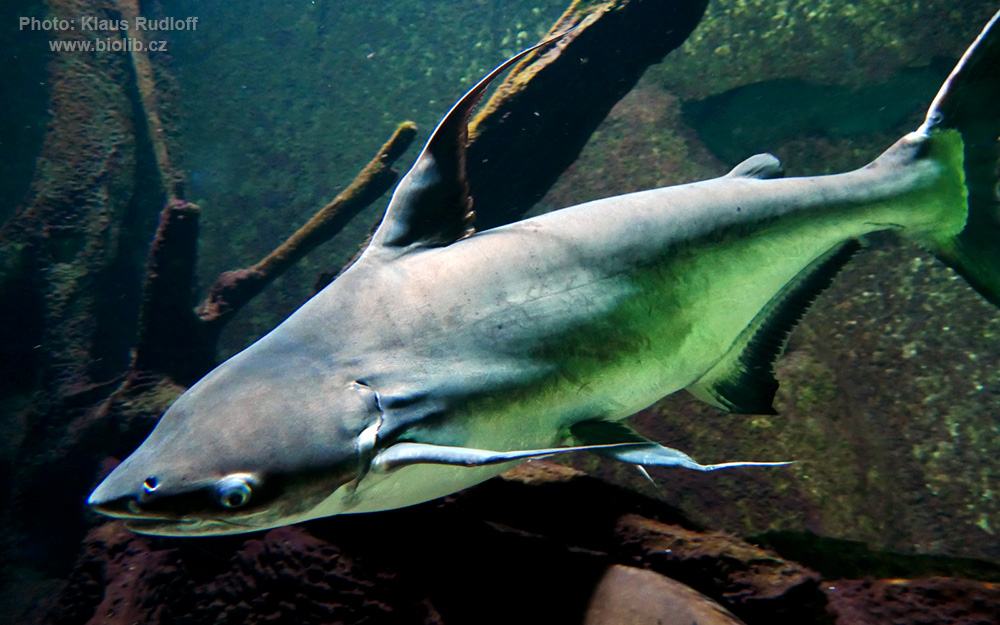Giant pangasius
(Pangasius sanitwongsei)

Classification
The giant pangasius, paroon shark, pangasid-catfish or Chao Phraya giant catfish (Pangasius sanitwongsei) is a species of freshwater fish in the shark catfish family (Pangasiidae) of order Siluriformes, found in the Chao Phraya and Mekong basins in Indochina. Its populations have declined drastically, mainly due to overfishing, and it is now considered Critically Endangered.
The species is native to the Mekong and Chao Phraya rivers. It has been introduced to central Anatolia, South Africa, and Malaysia.
The Pangasius sanitwongsei is tolerant in poor quality water and prefers to live in the bottom of deep depressions in freshwater rivers. The fish live in rivers but are experiencing endangerment due to dams being built, causing the fish to be trapped and unable to migrate.
The giant pangasius is pigmented with dusky melanophores. It has a wide, flat, whiskerless head. Its body is compressed and elongate, with a depressed head. It has a continuous and uninterrupted single vomero-palatine teeth patch which is curved.
The anal fin has 26 rays and the pectoral spine is similar in size to the dorsal spine and also shows serrations. It has a silver, curved underside and a dark brown back. Its dorsal, pectoral and pelvic fins are dark gray and the first soft ray is extended into a filament. Its dorsal, adipose, pectoral, and caudal fins are a dark grey to black coloring, with its anal fin and pelvic fins a white to grey coloring.
Full-grown adults can reach 300 centimetres (9.8 ft) SL in length and weigh up to 300 kg (660 lb).
More commonly, the fish is around 2 meters.











